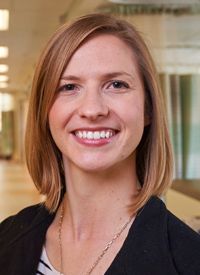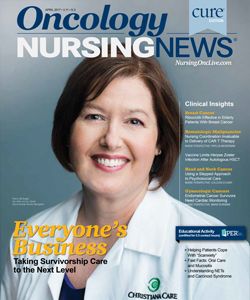The Universal Language of Caring
Language barriers can mean patients put off preventive screenings, and even treatment, for fear of being misunderstood by their healthcare providers.
Andrea Nicholson, MPH

Andrea Nicholson, MPH
If I could have a superpower, I’d wish to be able to speak every language in the world. The diversity of the patients I help to navigate, many who speak Spanish, Mandarin Chinese, and a variety of other languages, inspires me.
As a breast cancer screening navigator, it is my job to ensure that every woman who needs a mammogram can get one. That means helping to address patients’ barriers to care. Language can be a big barrier. Women who fear they won’t be understood by their provider tend to put off preventive health screenings, including mammograms.
OVERCOMING THE LANGUAGE BARRIER
Such was the case for Mrs. B, a 57-year-old retiree from Spain who had never had a mammogram. She presented with a lump in her right breast that she had felt for some time. Mrs. B had delayed going to a doctor in part because she did not want to have to rely on her son, who is bilingual and in his early 20s, to interpret for her.
She ultimately made an appointment with one of our partners, Congreso Health Center, a bilingual and bicultural primary care clinic whose patient service navigator connected Mrs. B to me for the mammogram.
I remember meeting Mrs. B and her son at that initial mammogram appointment. A certified language interpreter was there with us, and we had a seamless conversation about what to expect. Mrs. B was most relieved that her son could simply remain her son and not have to be her translator. I continued to see them—her son with her at every appointment—when they returned for the biopsy and the first visit with the provider to discuss her diagnosis and treatment. Each time, the interpreter was there, too, allowing each of us to feel understood in our roles as patient, family member, physician, and navigator. It is through these and many other interactions that I have come to value the importance of comprehensive language interpretation services as an integral part of navigation.
The next time I saw Mrs. B she was outside of the hospital waiting for her son to pull the car around. “Andrea!” she called to me from across the street. At first, I wished I had my superpower. But, even with only my basic Spanish skills, we had a meaningful interaction filled with hugs and laughter thanks to the connection we had built.
Navigating women along the breast cancer care continuum from screening to diagnosis and into treatment can reduce delays in care. This is particularly true for patients who do not speak English and may experience unique barriers to care. These may include the patient who is a no-show for appointments because he can’t read the signs to know where to go, the patient who doesn’t follow up because she can’t understand the voicemail instructing her to return, or the patient who can’t read her mammogram result letter and sees only the word “cancer” and assumes the worst. I see each of these as touchpoints with patients and an opportunity for navigation.
FEELING SUPPORTED AND UNDERSTOOD
Mrs. RM was one of these patients who without navigation may not have received timely treatment following her diagnosis. Our community health educator, Maria, met Mrs. RM, a 36-year-old woman who had recently immigrated to the United States, at an outreach event.
She learned that Mrs. RM had received a positive breast biopsy result at an area hospital, but had not yet started treatment.
She was quickly connected with our navigation services to help her get back on track. Maria helped Mrs. RM resolve an issue with her photo ID and speak with her employer about taking time off work. I set up transportation support to help her get to and from the appointments and facilitated her insurance coverage. Her provider helped her to further understand the diagnosis and treatment options. Before navigation, simply not knowing what phone number to call to schedule the appointment had delayed Mrs. RM for months. With navigation, she was connected to care within a week. Mrs. RM transformed to become an active participant in her treatment and decision making because she felt supported and understood by those around her.
The universal language of caring is one that as navigators we all speak. It is a privilege to use it to connect with patients each and every day.
Andrea Nicholson, MPH, is a patient navigator and program manager with the Penn Medicine Breast Health Initiative at the Abramson Cancer Center in Philadelphia. The Initiative provides free breast cancer screening and diagnostic services to uninsured and underinsured women as part of the Pennsylvania Department of Health’s Healthy Woman Program with support from Susan G. Komen. Nicholson is an associate fellow at the University of Pennsylvania’s Center for Public Health Initiatives and a steering committee member of the Pennsylvania Patient Navigator Network. Nicholson attended the Harold P. Freeman Institute for Patient Navigation in 2015.

Nurse Practitioners Weigh in on Data From the San Antonio Breast Cancer Symposium
January 16th 2023Loyda Braithwaite, MSN, RN, AGPCNP-BC, AOCNP; and Jamie Carroll, APRN, CNP, MSN, highlight presentations from the 2022 San Antonio Breast Cancer Symposium that will influence oncology nursing practice.


